The following report is from Phil Moon, Marketing Manager for DAF and one of the drivers of the truck during the rally, who describes the excitement and challenges of travelling 1,938 km in an electric truck.
Team DAF Cenex
Taking one of the BETT LF Electric trucks on the EV Rally seemed like a fun idea from the word go. It also seemed like a challenge, but it wasn’t until we got into the detail of range capabilities versus daily distances that we started to understand how much of a challenge recharging would be. Delivering electric trucks to customers or events is generally easily achieved with a mobile AC charger based at a DAF Dealer, but it was clear that we would want to use 150 kW DC chargers to avoid lengthy charging sessions; especially on the first two days of the event when we would be covering more than 300 miles (500 km) per day. (It’s worth remembering that most distribution trucks of this type wouldn’t normally cover so much ground in one day and the average daily distance for the BETT trucks is less than 100km as can be seen on the BETT Stats page). And we didn’t know whether we could actually get a truck onto any of the public DC chargers on route, which are designed with cars in mind, maybe vans at a push.
Despite these concerns, enthusiasm from within both DAF and Cenex was high and, with the opportunity to showcase the LF Electric, as well as bring more attention to the Battery Electric Truck Trial, the decision to participate was made.
Grazing
The uncertainty around charger point access for the 9.1 metre long and 2.5 metre wide LF meant we adopted a ‘grazing’ strategy around charging; picking up charge whenever convenient rather than trying to ‘stretch’ the vehicle range to its maximum. Although multiple smaller charges can add to overall journey time, we never felt range anxiety, and the shorter breaks seemed to pass quickly as we grabbed a snack and were soon on our way. When we did run a whole day without a top up on day four in Northern Ireland, the inevitably long charging time was not only frustrating for us, but also for the other rally teams who were trailing us on the day! (It’s worth a mention here that charging stations aimed at drivers on longer journeys really ought to have refreshments and toilets to make for a pleasant wait and to avoid having to nip behind the shrubbery).
It’s a squeeze
In the event we were fortunate to be able to squeeze the truck onto charging bays helped by the comradery of other EV users who were always willing to make a bit more space for us – although I’m not sure they’d be so accommodating if seeing a big electric truck weren’t such a novelty! Or if there was a queue of them! It was obvious however that life for drivers of larger vehicles – not only trucks, but also vans and cars towing trailers – could be made much easier with some simple adjustments to charger station design such as slightly wider and longer bays, longer cables capable of accessing both side of the vehicle and higher canopies. Ultimately the goods transport sector will need dedicated infrastructure but, in the same way some local petrol stations have an HGV specific diesel pump with a bit more space around it, so too could charging stations. Identifying such large-vehicle accessible chargers in the many apps available, would complete the picture.
On days two and three, we included charging stops courtesy of BETT participant YPO in Wakefield and First Bus in York and then in Glasgow. These charger installations designed with trucks and busses in mind are great exemplars of what could be achieved by logistics companies looking at electrification of their fleets. In Glasgow we saw how simply wrapping the cables in a high visibility sheath makes them easy to see and avoid. We need to share such knowledge and experience, and by opening such facilities up to outside users, utilisation can be extended around the clock as most buses are out on their routes during the day.
Hypermiling
Despite shorter daily distances on the island of Ireland, the recharging strategy was no less considered, as the charging network there is much less mature. Day four saw us take on the scenic and rural roads around Northern Ireland without recharging until close to the end of the day in Newry. Focussing on efficient driving and making full use of regenerative braking through the rolling countryside saw us achieve our most fuel-efficient day, achieving 1.33 km/kWh. With an effective battery capacity of 254 kWh the LF Electric could in theory have covered nearly 340 km that day, but we should admit that an aversion to customs paperwork meant we were unladen throughout the rally.
As Dublin neared, we’d become rather blasé as the LF continued to perform without a hiccough and we’d become more confident in being able to find suitable charging. There were issues connecting to some chargers, but our ‘grazing’ strategy meant we had plenty in reserve to handle any slight diversion to an alternative. Of course, drivers on regular routes become accustomed to where and when to charge and although electric truck operation certainly demands planning, that’s part and parcel of modern-day logistics and, with opportunity charging at collection and delivery points a real possibility, even longer daily routes needn’t mean bigger batteries. And that’s a big consideration as batteries not only make up a lot of the additional cost of electrics, they also take up chassis space and eat into vehicle payload.
The Finish Line
The EV Rally met its key objective showcasing electric vehicles of all types; and the two participating trucks certainly seemed to grab their share of the attention. We’d decided early on that to capitalise on the event we wanted to involve as many people as we could from within the DAF team. To share our story and, in so doing, to raise awareness of BETT, we also had a small support team including both DAF and Cenex team members and we hooked up with videographers along the route. This enabled us to produce content for social media and to share it almost immediately. With the combined voice of all rally participants, it felt like we’d taken over the social media airwaves for the duration of the EV Rally, and the conversations continue. Job well done! Oh, and it was fun too.
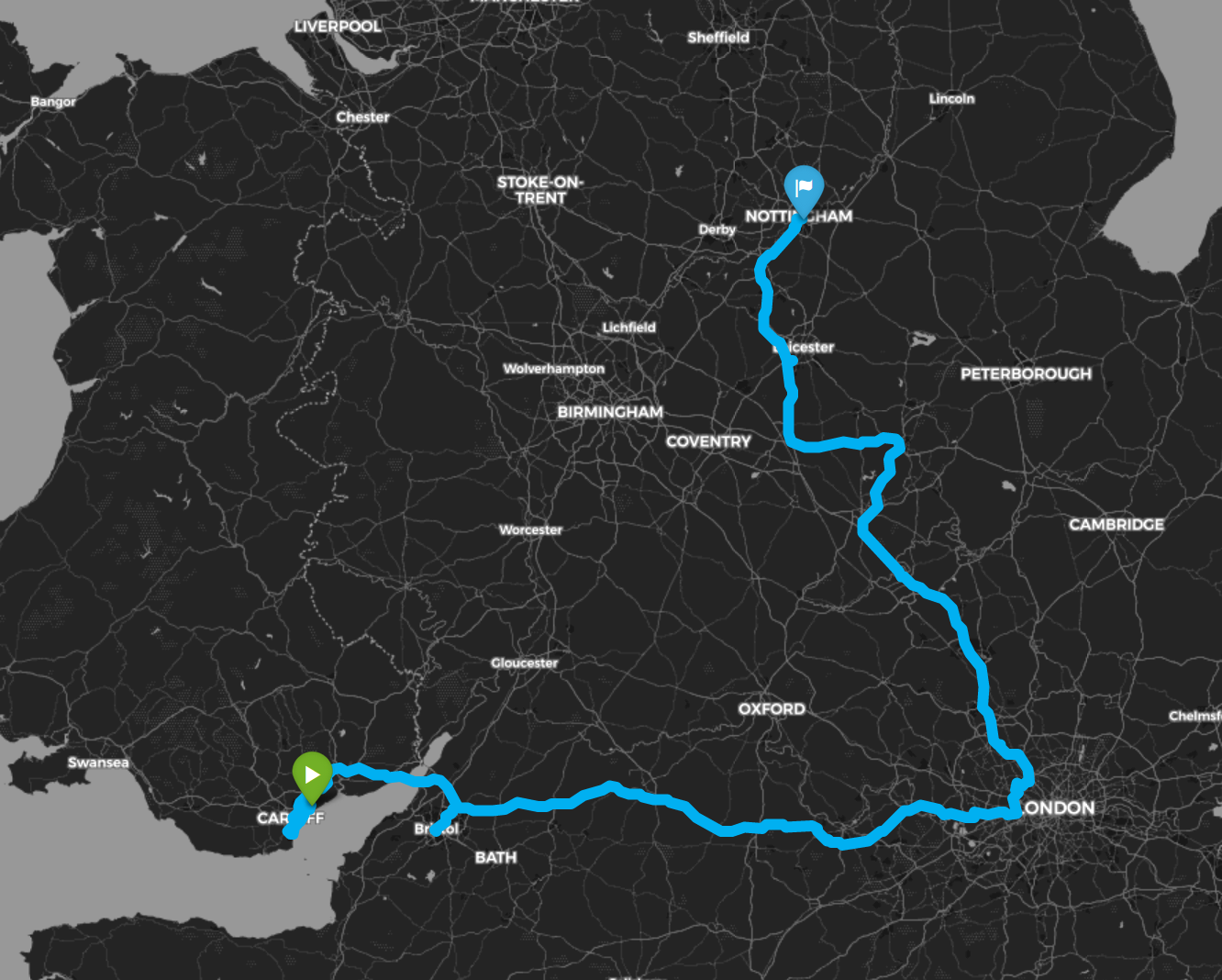
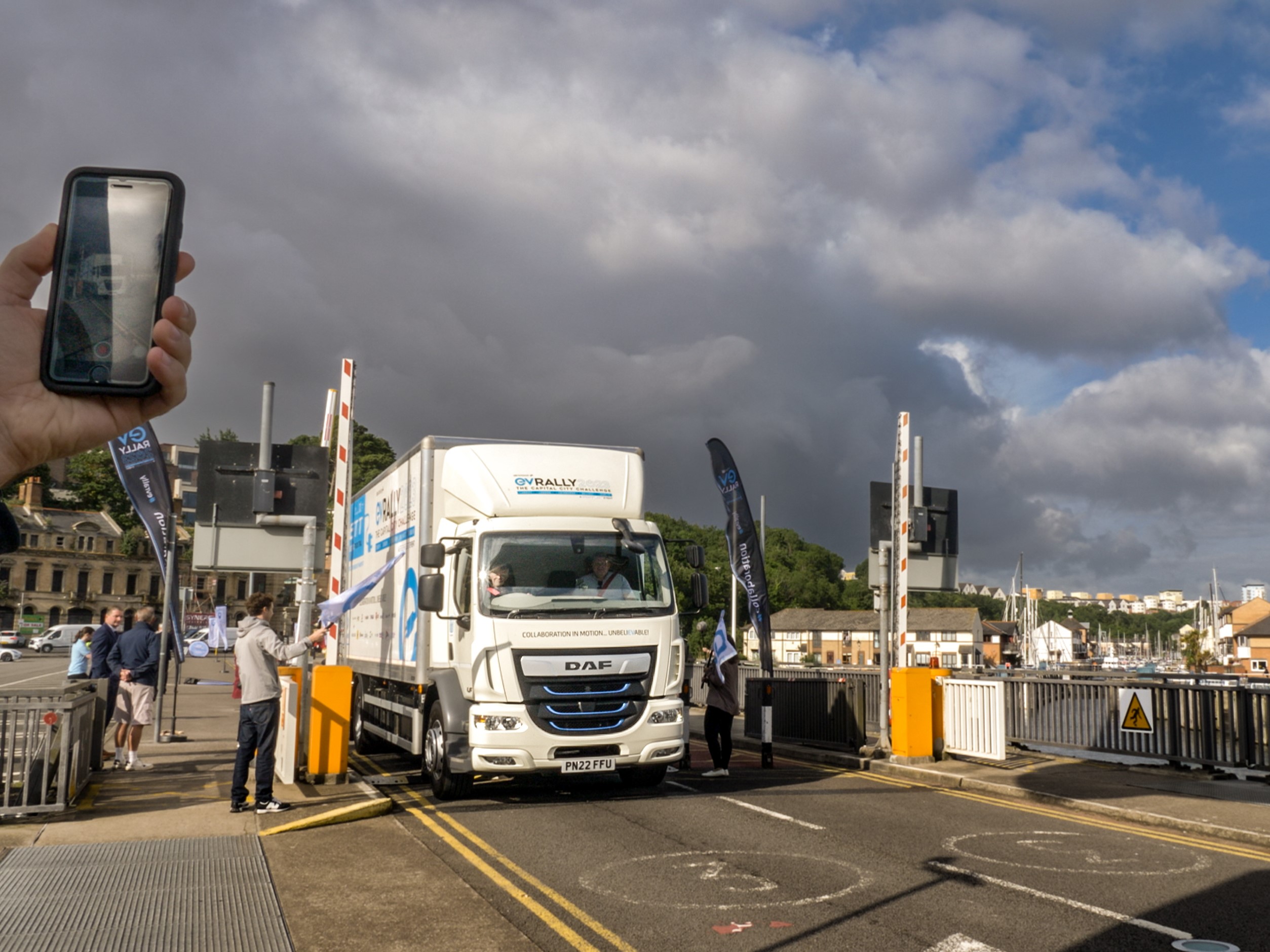 The start of the rally at Cardiff Barrage
The start of the rally at Cardiff Barrage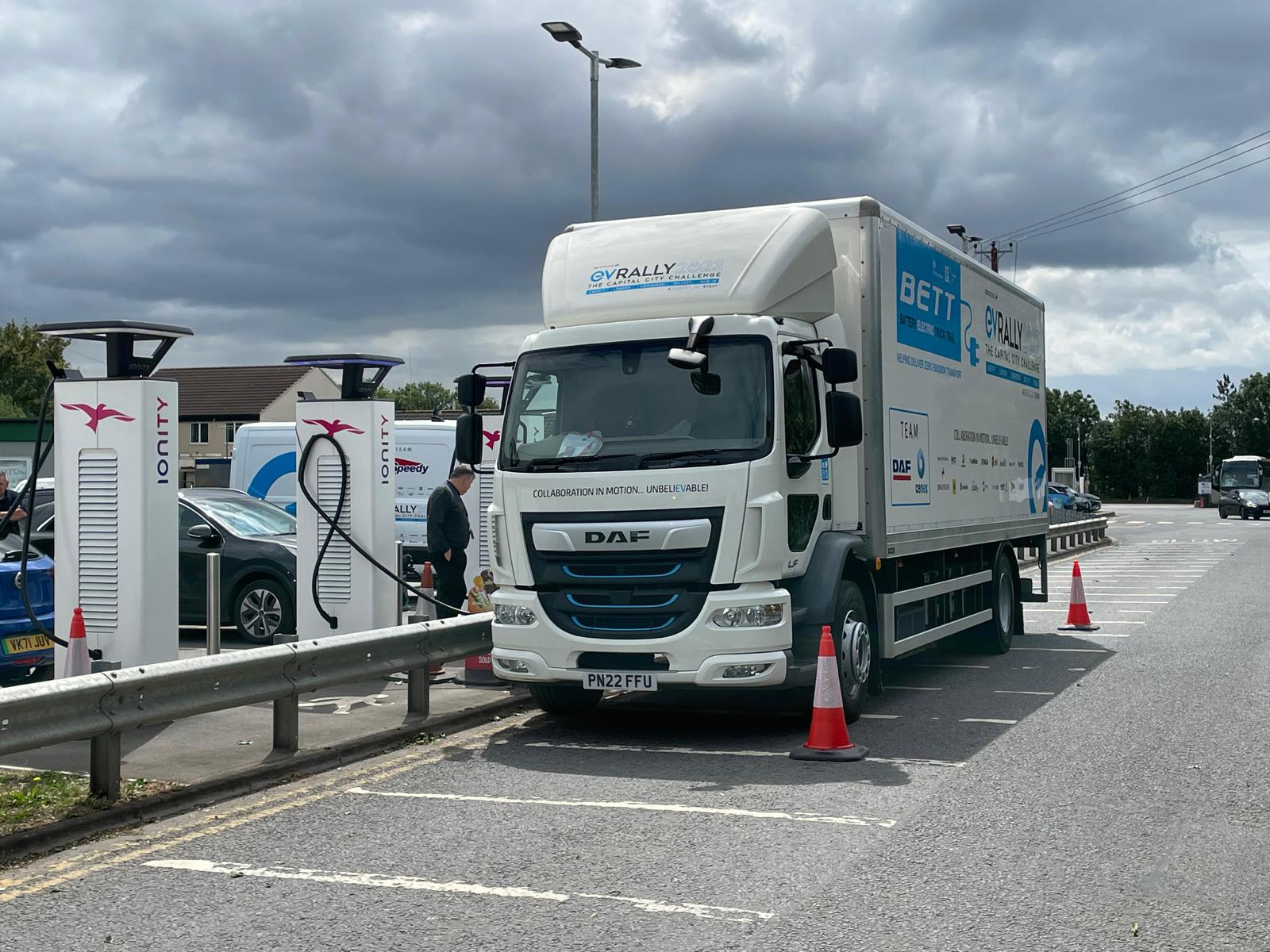 Being a little creative with parking bays while using a public charger on the M4
Being a little creative with parking bays while using a public charger on the M4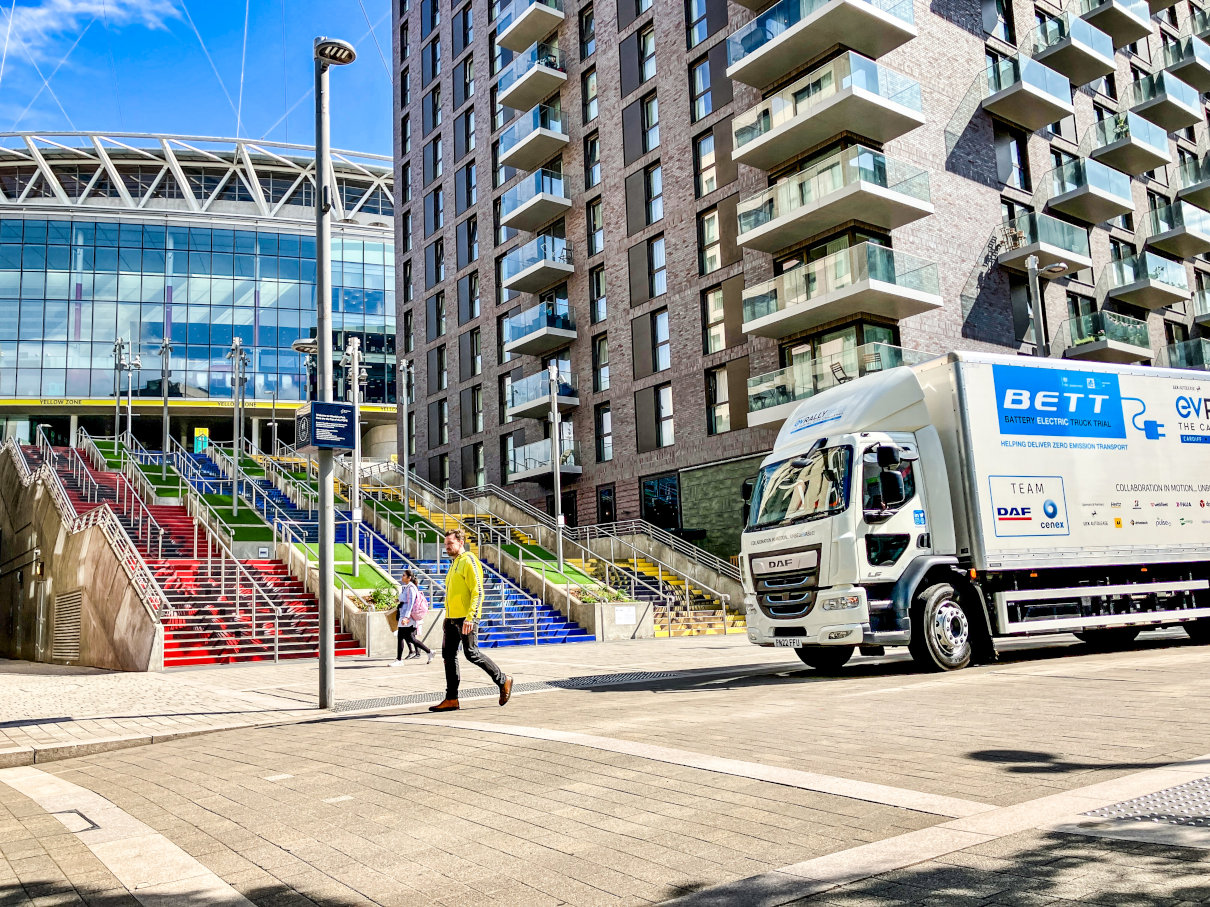 The truck outside Wembley Stadium.
The truck outside Wembley Stadium.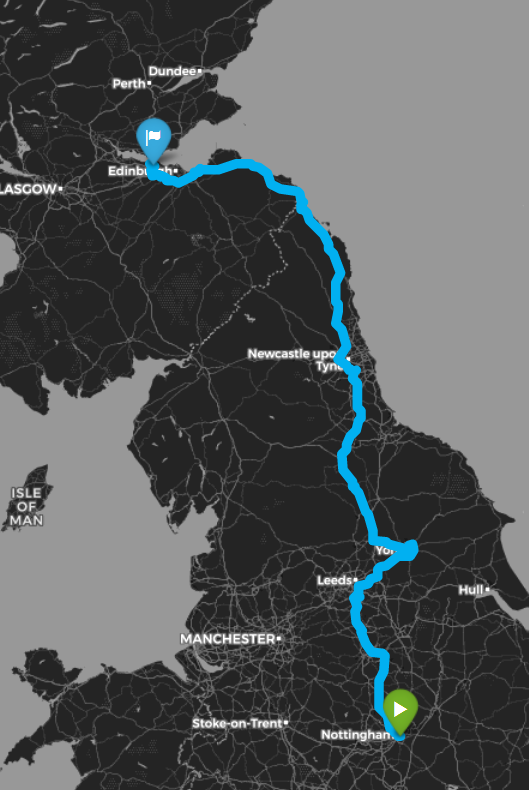
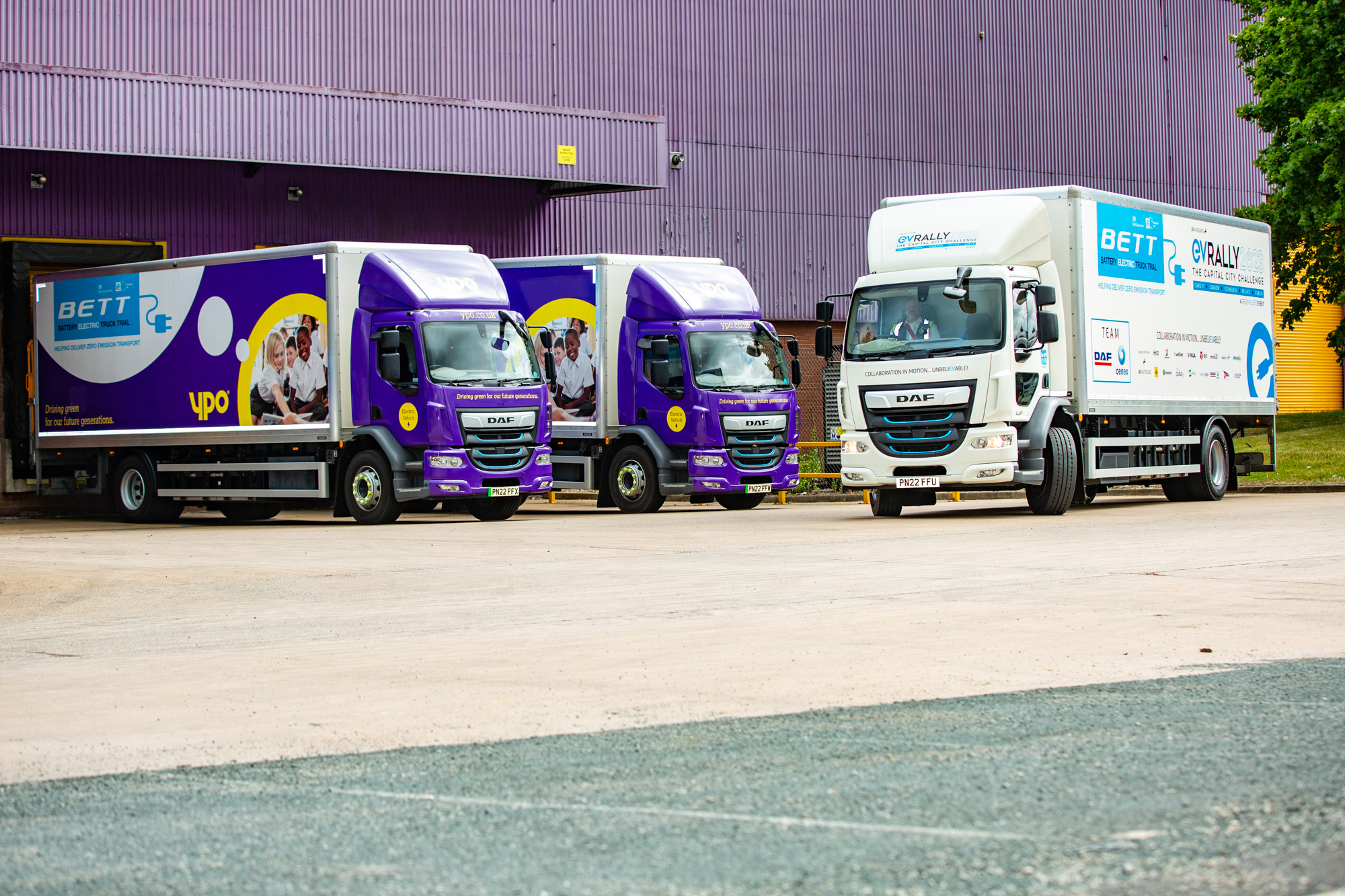 The truck at the YPO depot with 2 other BETT vehicles.
The truck at the YPO depot with 2 other BETT vehicles.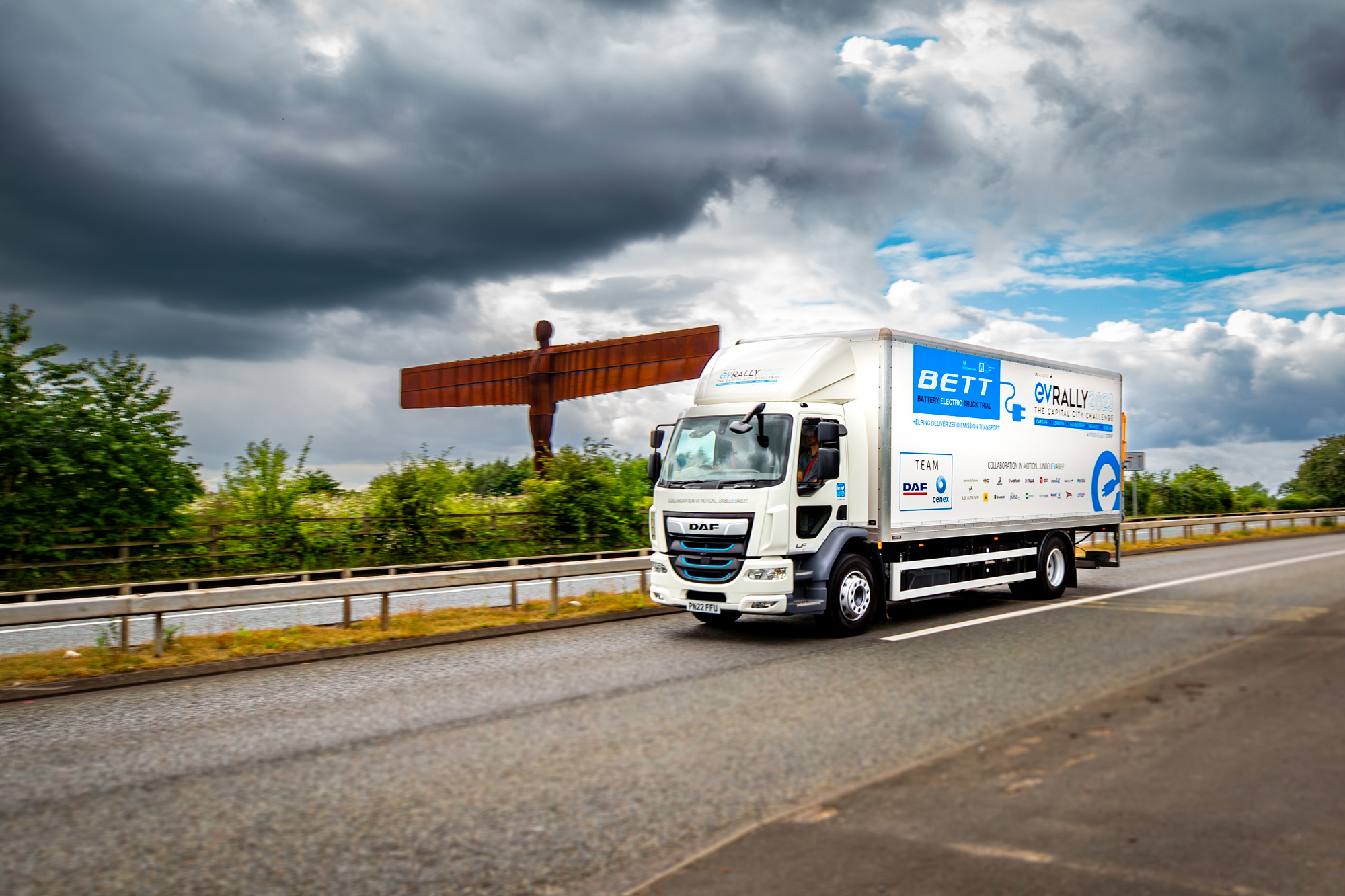 The truck passing the Angel of the North
The truck passing the Angel of the North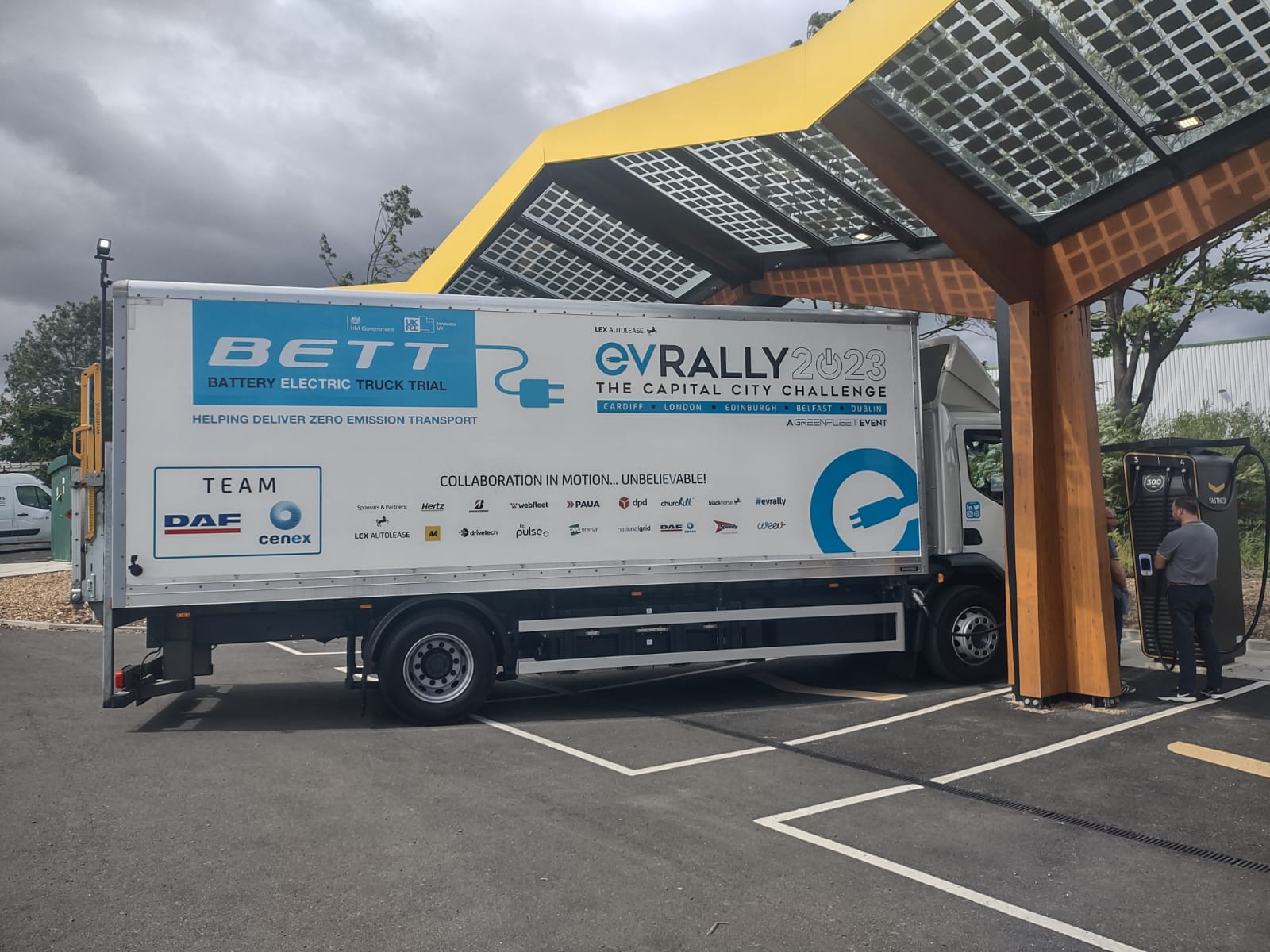 The truck squeezing under the canopy of a public charger
The truck squeezing under the canopy of a public charger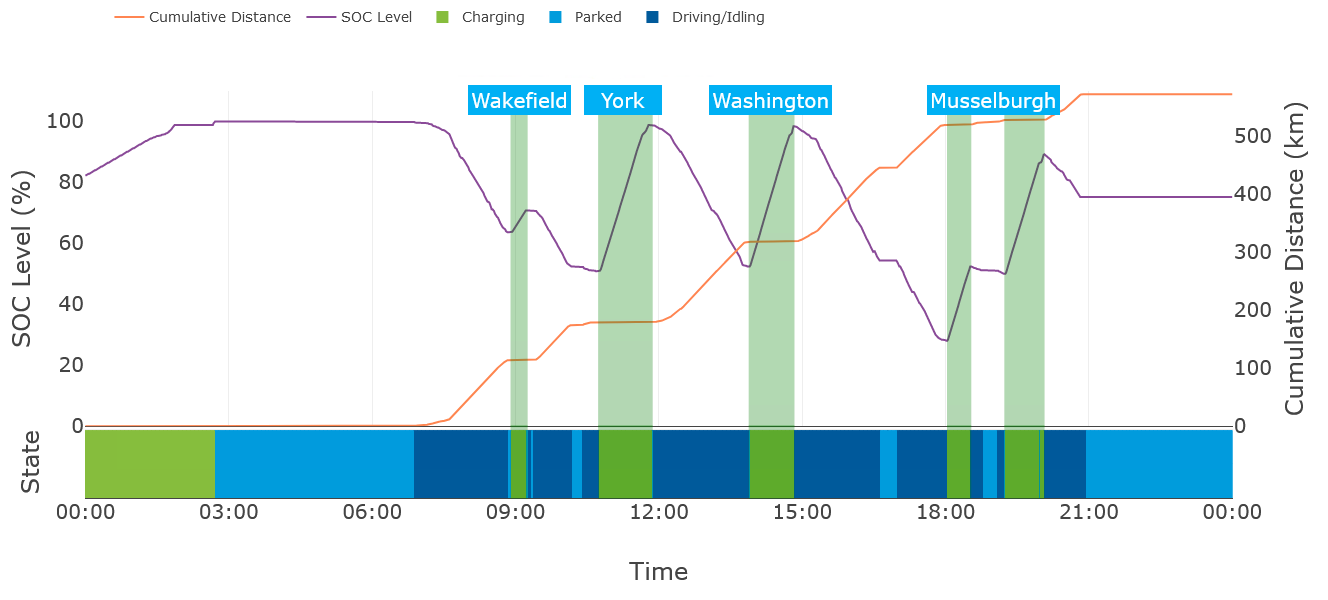
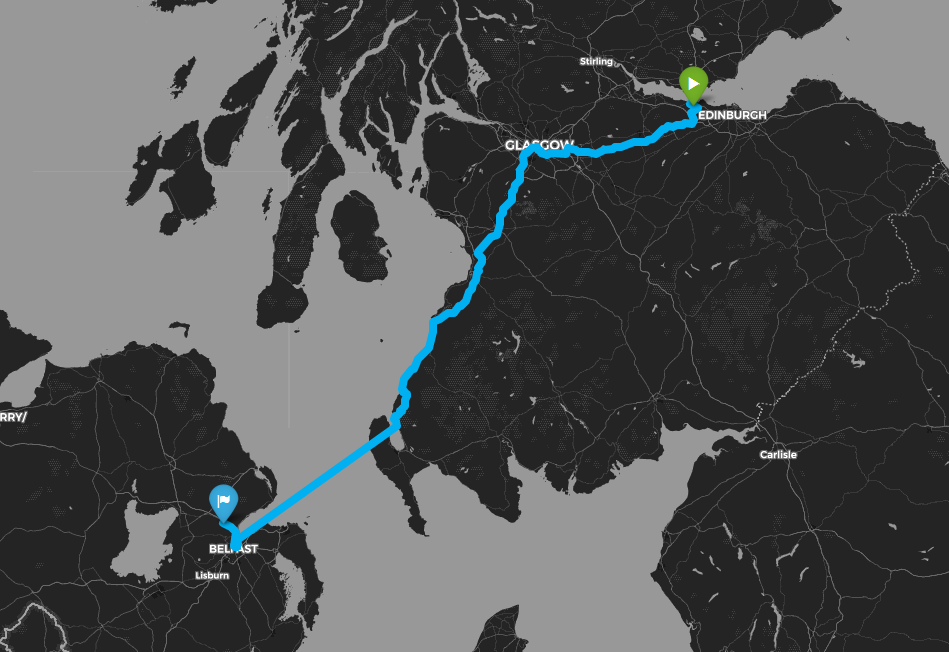
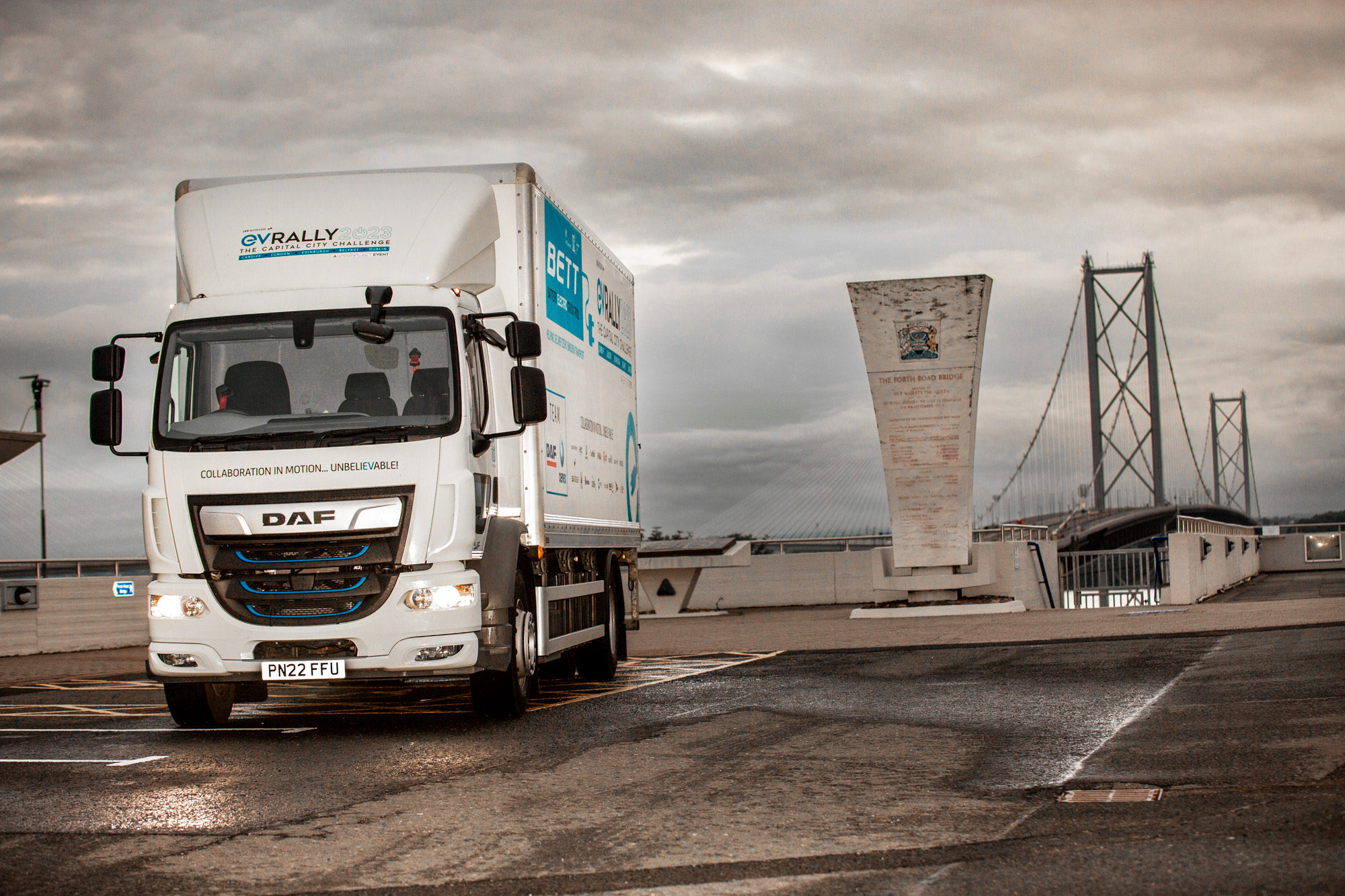 The truck in front of the Forth Road Bridge at the start of the day.
The truck in front of the Forth Road Bridge at the start of the day.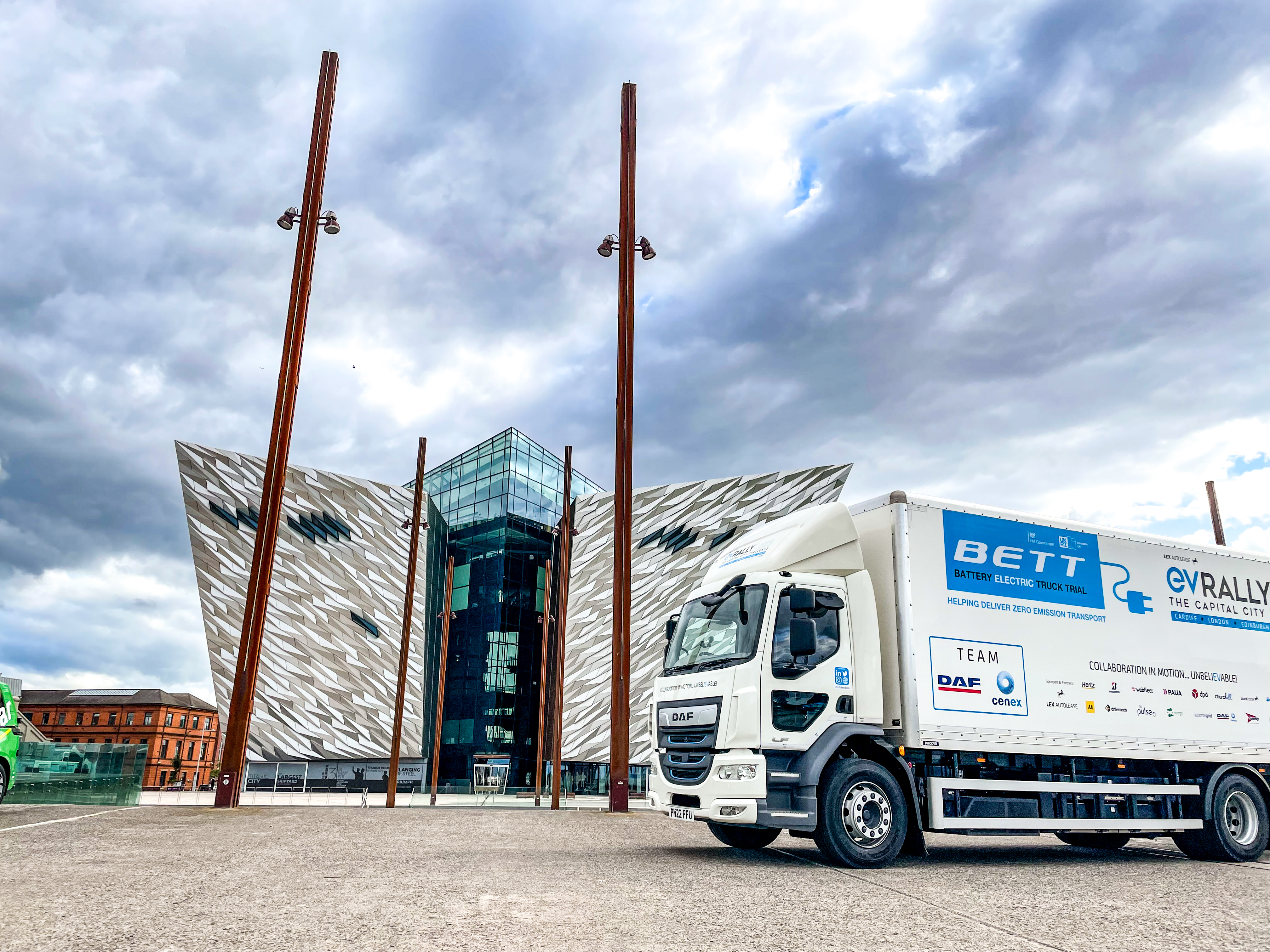 In front of the Titanic Museum in Belfast at the end of the day.
In front of the Titanic Museum in Belfast at the end of the day.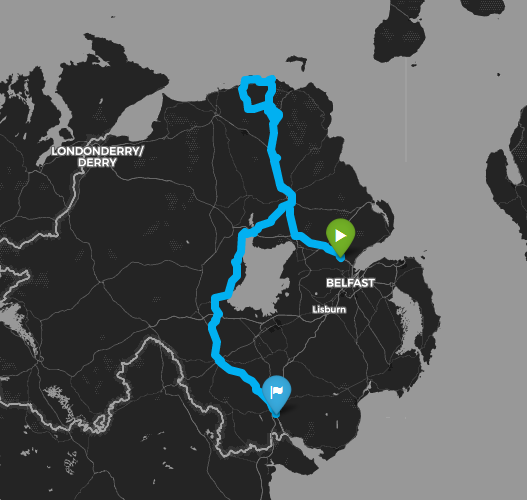
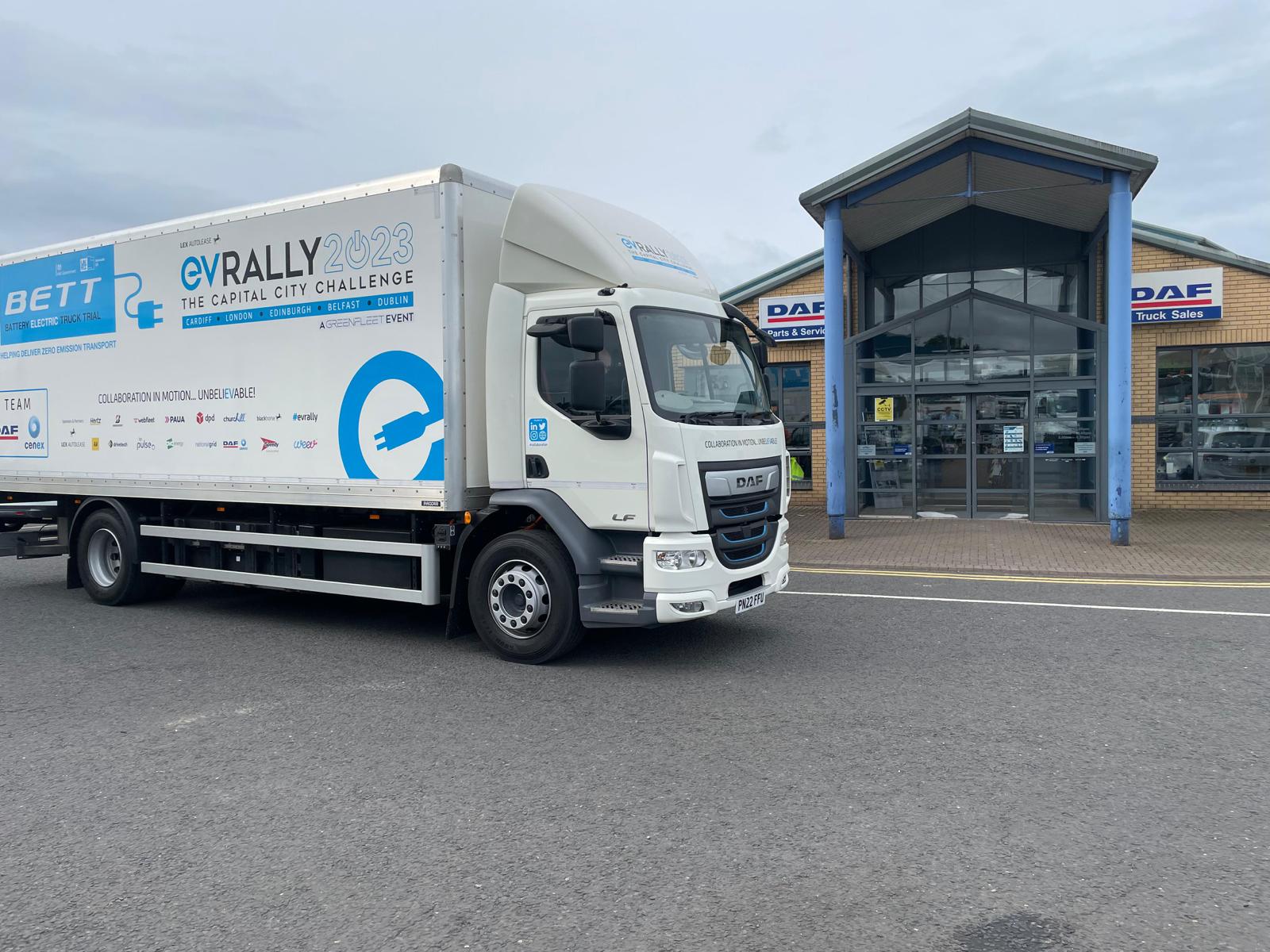 The truck visits a DAF dealership.
The truck visits a DAF dealership.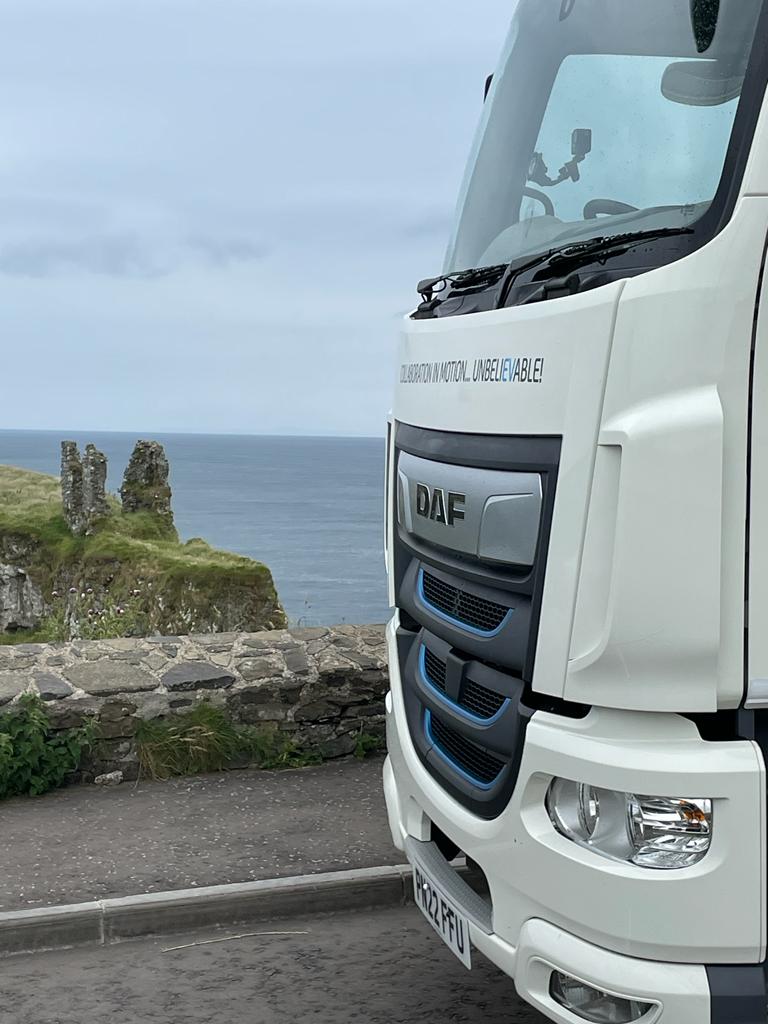 Taking in the beautiful Northern Irish scenery.
Taking in the beautiful Northern Irish scenery.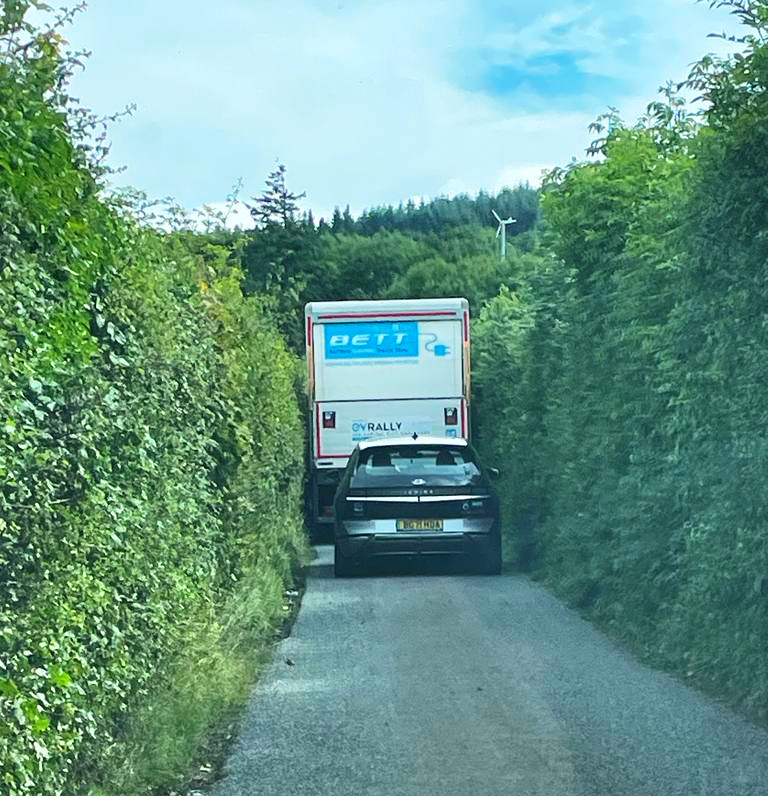 Squeezing down a narrow country road.
Squeezing down a narrow country road.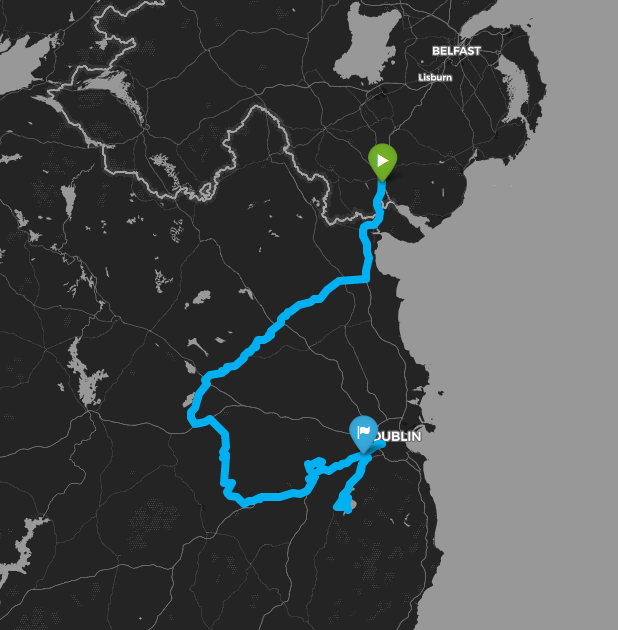
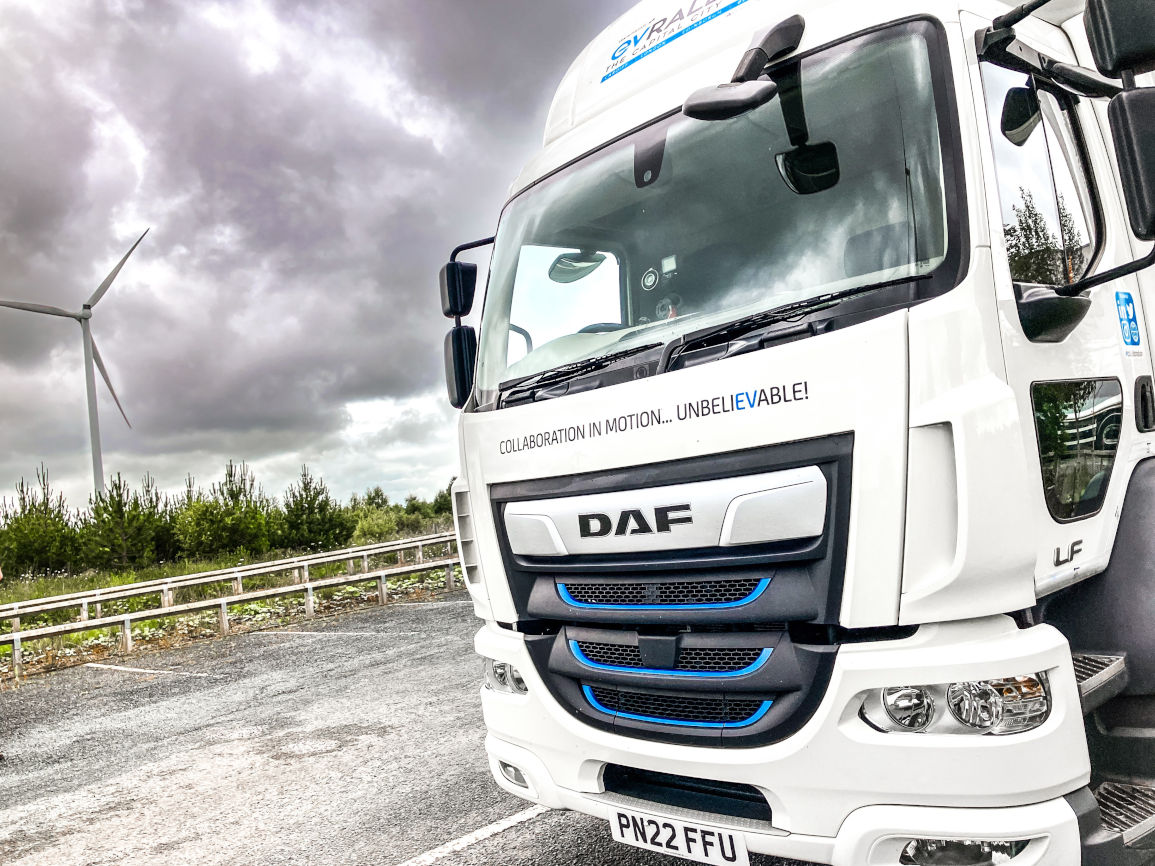 The truck in front of the Mountlucas wind farm.
The truck in front of the Mountlucas wind farm.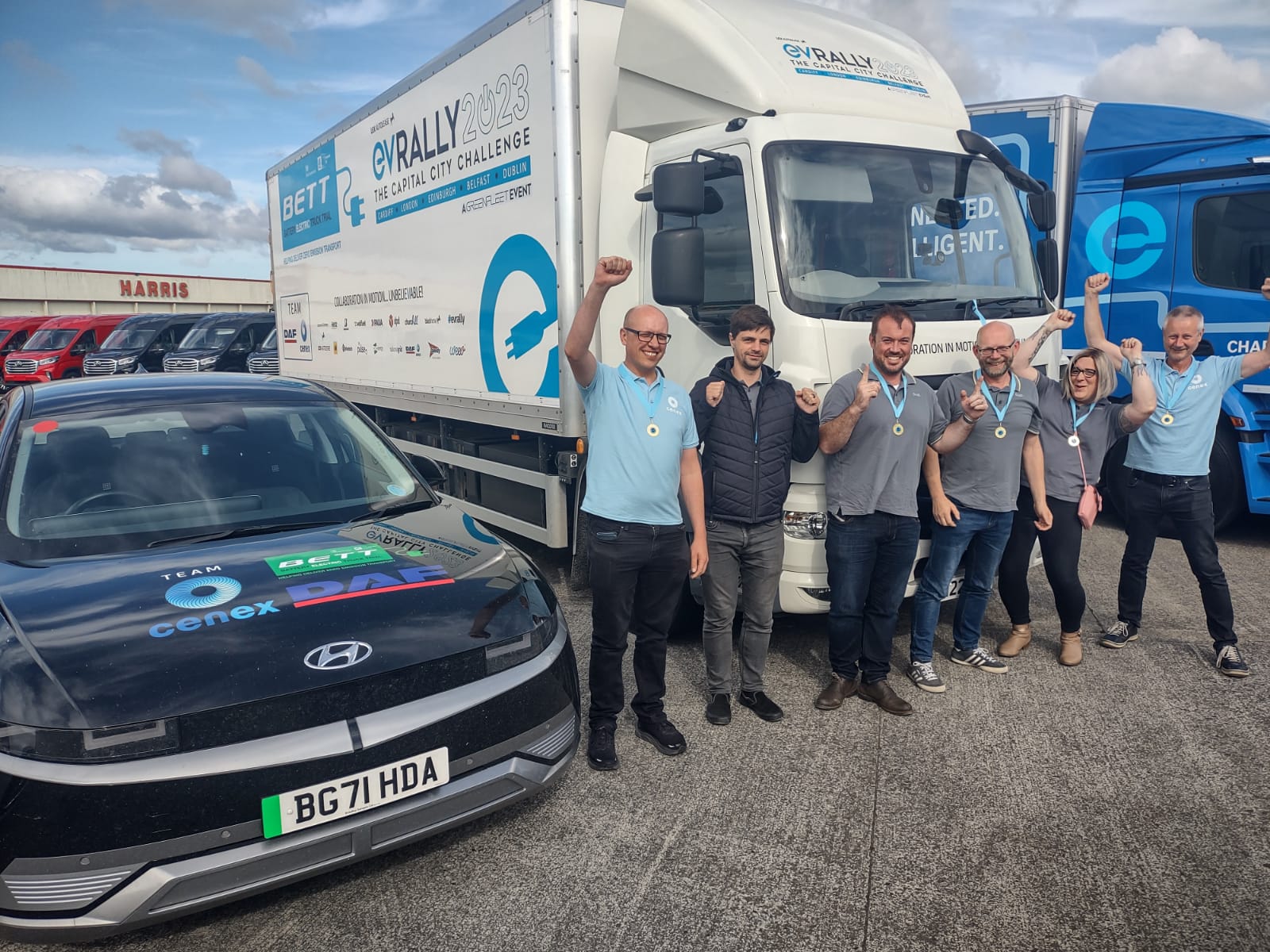 Team Cenex-DAF in front of their vehicles at the finish line.
Team Cenex-DAF in front of their vehicles at the finish line.